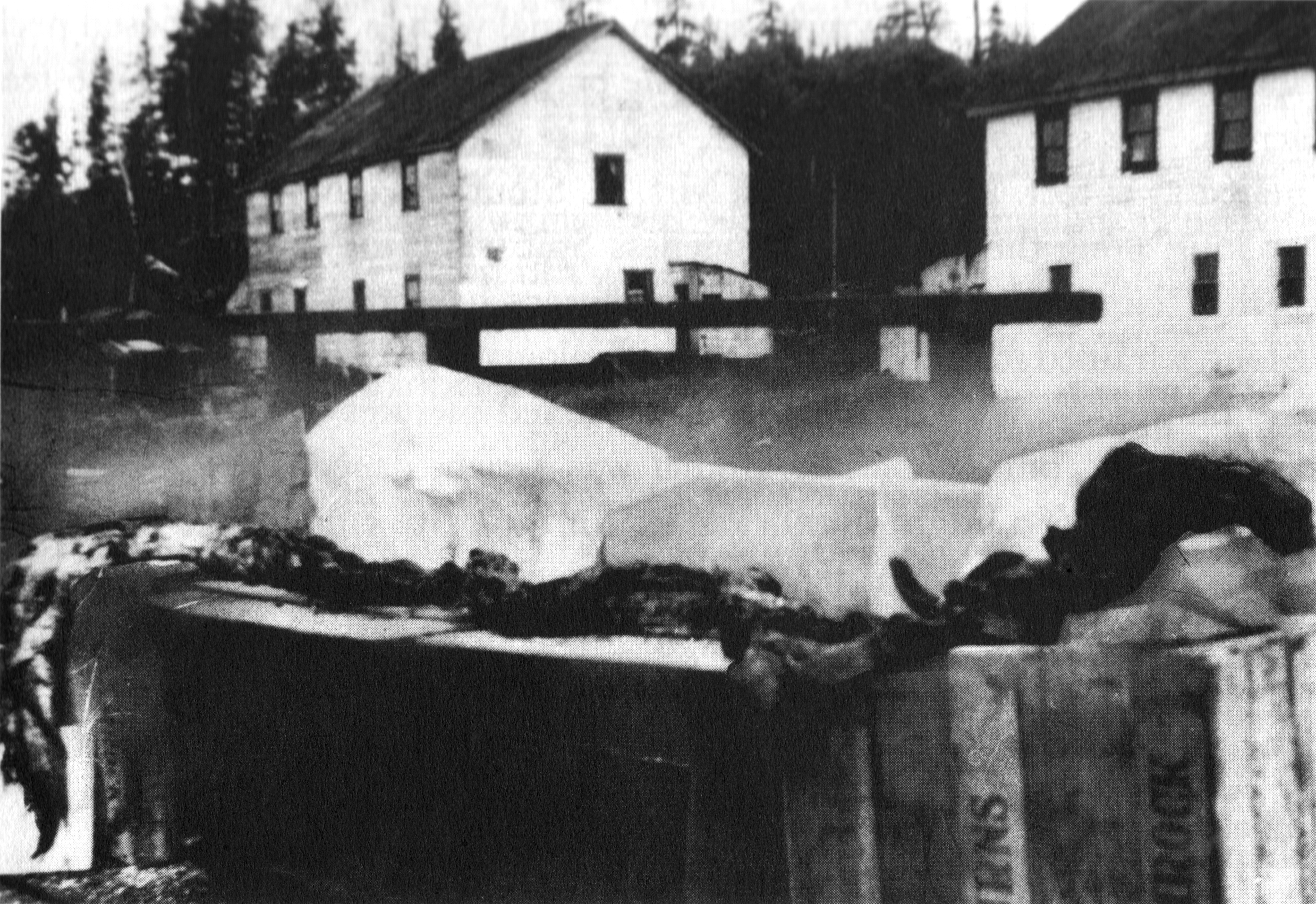 |
| Alleged Cadborosaurus carcass |
In the northern waters of the
Pacific, on the western coast of North America, there have been sightings of a
creature that is similar to the Loch Ness Monster for more than a thousand
years. This creature has reportedly been sighted off of the coast of Canada
frequently and has even been reported in Alaskan waters and as far south as
Monterey Bay in California. This creature is known as the Cadborosaurus and it
is presumably a sea serpent. The only evidence of the existence of the Cadborosaurus
are reported sightings, so the creatures very existence is a mystery. However,
like many other sea serpent sightings in other parts of the globe and
throughout history, it is hard to ignore due to the number of these sightings.
The Cadborosaurus is known by
several monikers in many different places. Its other names include, Caddy,
Pal-Rai-Yuk, Klematosaurus, Sarah the Sea Hag, Saya-Ustih, Hiyitlik,
Tzarta-saurus, Sisiutl, Penda, Amy, Kaegyhil-Depgu’esk and Say Noth-Kai.
Despite the many names that this creature is known by, descriptions of the
animal by witnesses are very similar. Of course, there are subtle differences,
but researchers believe that there may be subspecies of Cadborosaurus or that
its appearance changes throughout its life.
The Cadborosaurus is described
as roughly ten feet and more in length. It is said to have the slender,
elongated body of a serpent. Its head is said to look like that of a camel (of
all things). It does have fins, but the number of fins, location and description
of the fins differ. Some people claim to have seen the animal feeding. The
creature has been spotted hunting schools of fish and it has also been seen
eating waterfowl, which it is said to have swallowed whole.
In 1937 a Cadborosaurus was said
to have been found in the stomach of a whale near the Queen Charlotte Islands.
Photos of the find were taken and samples were sent out to experts. One of the
tissue samples was lost and the other was found to be from a fetal baleen
whale. However, eyewitnesses say that there is no way that it could have been a
fetal baleen whale and the pictures of the creature back up this claim. Of
course, pictures are hardly scientific evidence. There are also people who
claim to have caught Cadborosaurus specimens and have had to release them for
one reason or another. Reported sightings and interactions with these animals
are very numerous, but the fact remains that not one carcass, skeleton or live
specimen has been found and identified as a sea serpent.
Throughout recorded maritime
history stories of serpentine creatures being spotted in the ocean and in other
deep waters have been fairly common. The sheer number of these supposed sea
serpent sightings and the number of places that these sightings have occurred
makes it hard to dismiss the existence of sea serpents easily. There is also
the fact that the waters of the Earth are largely unexplored and we certainly
haven’t been able to identify and classify every creature in their depths. So
until we know for sure that we have identified everything in the Earth’s waters
or we find a specimen and are able to study it thoroughly, the existence of
these creatures will remain a mystery and people will continue to search for
the elusive Cadborosaurus.
Sources
Cadborosaurus, retrieved
10/20/09, bc.scc.ca/cadborosaurus
The Cadbrosaurus Watch,
retrieved 10/20/09, qsl.net/w5www/caddy.html+
No comments:
Post a Comment